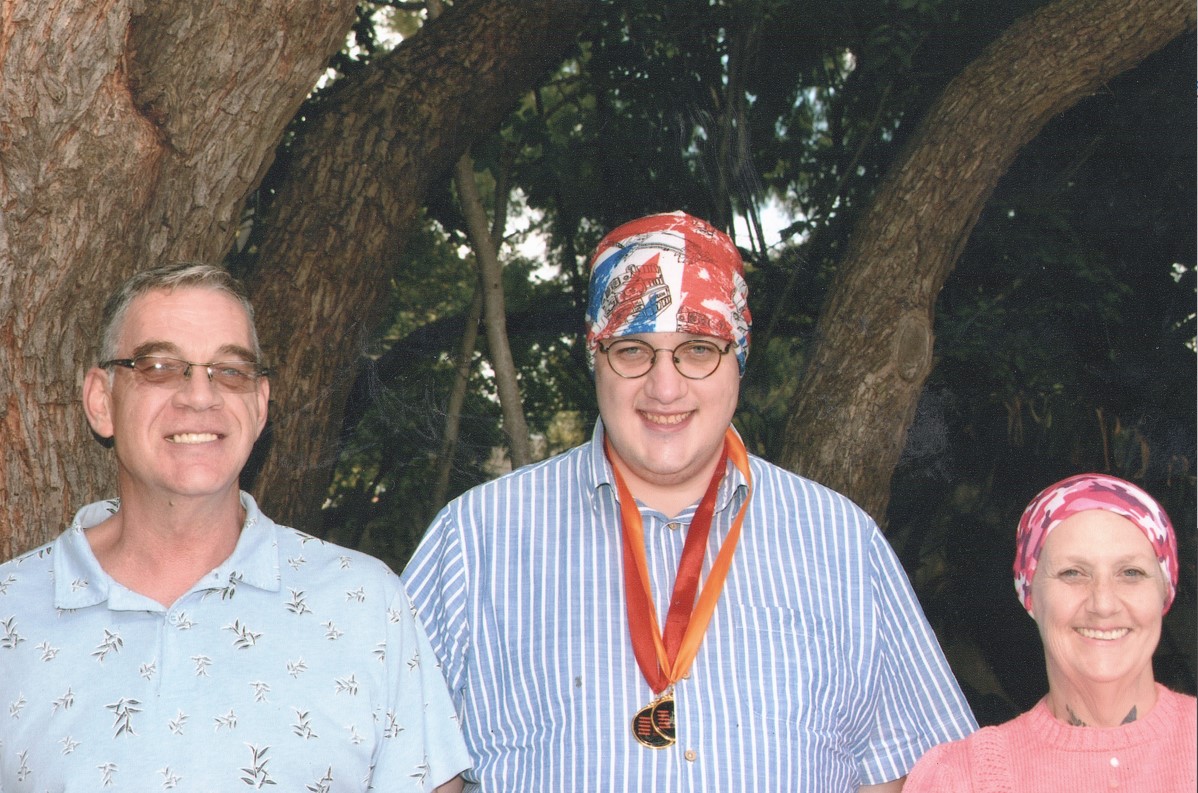Epilepsy Week: Mother Adrienne’s Call to Action through the Keto Diet
Share

This is her journey
This week is National Epilepsy Week, and with various advocacy groups championing the de-stigmatization of epilepsy, mother Adrienne Olivier has also joined the cause as someone whose son has suffered from epilepsy since the age of 7 years old.
After experiencing his first seizure, Peter Olivier, her son, was diagnosed with refractory epilepsy, which is categorized as a severe form of the condition and does not respond to most prescribed treatments.
Life as they knew it changed, and an uphill battle ensued.
“Peter had failed all conventional medications, was diagnosed with an intractable seizure disorder, and was at high risk of sudden unexplained death in epilepsy (SUDEP). That saw him experience significant increases in both daily and nocturnal seizures, and the side effects from the medications were devastating, causing personality changes, rapid weight gain, cognitive decline, and loss of motor skills,” said Adrienne.
Intractable seizure disorder means that the prescribed medications stop working after two weeks or so.

The Olivier family with Peter in the centre
“The lack of pediatric neurologists led to Peter only seeing his neurologist once a year. This compounded the issue, as weight and hormonal changes also affect medication dosages. And as an A-grade student, his cognitive decline resulted in his leaving school in 2013. This was not only because of deteriorating grades, but also due to medical and legal aspects the school may face and the possible fear from peers who do not understand the disease. I stopped working to become his caregiver and educator,” she added.
This unfortunate occurrence further exposed them to the reality of how prevalent discrimination is against people living with this chronic, noncommunicable disease.
Adrienne explains: “The discrimination is experienced in so many ways, like having to leave school or not getting invites to parties or gatherings.
“I have found that people would refer to people like Peter as having something wrong with them and having the intelligence of a three-year-old. There’s a lot of blaming on the part of parents for the condition, and that stigma is difficult to change, unfortunately. As a result, they often face isolation and an inability to earn a living as members of society.”

Brain graphic | SOURCED ONLINE
But Adrienne had to make big changes for Peter that have guaranteed him an improved quality of life by taking the big step of changing his diet, switching to the ketogenic diet, which helped him stay seizure-free for four years.
This was also greatly inspired by her friend, Sam, who also changed her child’s diet—a diet that yielded results for the Oliviers in just 24 hours of strictly following the Therapeutic Ketogenic Protocol.
With proof to back her up, Adrienne believes all epilepsy patients deserve a chance to live a productive life when medical drugs fail them and says a low-carb, high-fat lifestyle is a big component towards achieving this.
Adrienne has since become a ketogenic lifestyle coach, Nutrition Network Advisor, and member of the Society of Metabolic Health Practitioners.
“We had no idea that the therapeutic ketogenic diet in epilepsy would play a role in our entire family’s metabolic health issues,” she added.
Epilepsy is one of the world’s most common chronic neurological disorders, affecting one in every 100 South Africans, according to Epilepsy South Africa.

Jayne Bullen, Chief Operating Office
Jayne Bullen, Chief Operating Officer at The Noakes Foundation, a non-profit that aims to challenge mainstream scientific thinking around the link between nutrition and chronic diseases, adds that it’s time to move beyond the constraints of modern Western medicine and consider other approaches.
“The curative properties of nutrition are well documented and researched, and they shouldn’t be discounted. Adrienne and Peter’s story is just one example of how our diets can play a major role in our health,” says Bullen.
Bullen adds that the ketogenic diet promotes eating foods rich in fats and proteins while excluding carbohydrates like bread and pasta. This puts the body in a state of ketosis, which means it burns fat for fuel instead of sugar, releasing a compound known as a ketone.
“The brain can use ketones as an alternative energy source, which can reduce the frequency and magnitude of epileptic attacks by interrupting seizure pathways.”

Graphic of an epileptic episode | SOURCED ONLINE
Below are recommendations from Adrienne on how to transition themselves or their child to a low-card, high-fat lifestyle.
“Firstly educate yourself and all that you need,” shares Adrienne. “The Ketogenic Diet is a medical protocol, so in Epilepsy a parent needs to understand that there can never be a cheat as Ketones are medicine and they will possibly risk seizures in tens of minutes:
- Referring to eating real food has many meanings, so I have a really simple analogy I use. Cook from scratch and from our creator’s pantry. Eat healthy saturated fats first, protein as it would walk in the fields, swim in the sea and fly in the sky.
- Don’t eat vegetables that grow under the ground but rather leafy greens.
- Eat your fruits, don’t drink them. Buy fruit seasonally and don’t purchase thrift packs. If you purchase food, read the label. If it has more than 3 ingredients it is not real food
- Just cook from scratch without preservatives and you will already see an improvement.
Example on how we as a family implemented the plan.
- Any fresh protein in the form of fresh poultry, fish, eggs and red meat.
- Always add a tablespoon of added fats like lard and butter to all meals.
- All protein purchased had to have visible fats.
- When serving, all the rendered fats in the pan are added to the plate when serving.
- Eat only leafy greens and keep it to 3 handfuls of raw greens. They judge raw portions due to water loss during cooking.
- No root vegetables unless turnips or kohlrabi.
- No fruit except for a tablespoon of berries and they must then be part of a meal and not a snack.
- No dairy other than full fat cream, hard mature cheese and butter.
- 100% pure coffee.
- Deglaze pan with a tablespoon of cream to make a gravy.
- Protein portion per meal is judged to the size of the palm of their hand and it must have visible fats.
- Only half a medium avocado a day.
- 10 Olives a day
- We kept a food diary by taking photos of all of his meals.
- Seasoning used is homemade.
- No sweeteners or processed foods at all.
Below you will see sample meals the family adhere to.
BREAKFAST
- 2 eggs and prepared as you enjoy along with a tablespoon of butter or lard.
- 3 slices of streaky bacon. Pork Belly, a Mutton chop or a Beef short rib can replace the bacon if need be.
- Slice of tomato or 3 cherry tomatoes.
LUNCH
- Protein of choice with visible fat.
- A fresh leafy garden salad.
- Your avocado portion for the day and olives or olive oil to dress it.
- A slice of tomato or 3 cherry tomatoes.
DINNER
- Protein of choice with visible fats, cooked greens or served as a salad.
- Keep in mind no more than 3 handfuls a day of cooked raw leafy greens.
- Fried Mushrooms and make a creamy cheese sauce with cream and cheese allocation for the day.




